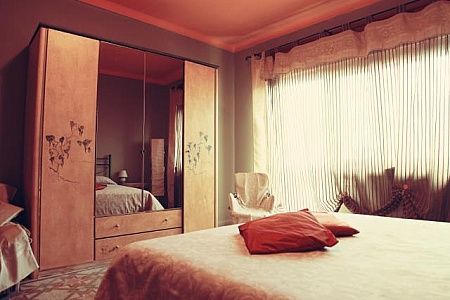Within the realm of home decor, the significance of furniture transcends mere functionality; it becomes an essential element in shaping the aesthetic narrative of living spaces. This exploration delves into the artistry, craftsmanship, and design principles that define furniture as not just utilitarian pieces but as curated expressions of style. From the meticulous selection of materials to the fusion of form and function, furniture stands as a testament to the intersection of practicality and aesthetics in the world of interior design.
The Artistry of Craftsmanship
Furniture, at its essence, is a manifestation of craftsmanship—an art form that blends skill, precision, and creativity. Each piece represents the culmination of thoughtful design and meticulous construction, embodying the expertise of skilled artisans. Whether it be a hand-carved wooden coffee table or an intricately upholstered sofa, the artistry of craftsmanship elevates furniture beyond its utilitarian role, transforming it into a statement of timeless elegance.
Materials as the Foundation
The choice of materials is the cornerstone of furniture design, influencing both aesthetics and longevity. Fine woods, such as oak, walnut, or mahogany, convey a sense of luxury and durability. Metal elements, like brass or stainless steel, introduce a modern flair and structural strength. Upholstery fabrics, ranging from sumptuous leathers to durable textiles, add texture and comfort. The art of furniture lies in the discerning selection and harmonious integration of these materials, creating pieces that stand as both functional and aesthetic masterpieces.
Styles as Design Expressions
Furniture design spans a diverse spectrum of styles, each conveying a distinct design philosophy and historical context. From the opulence of Baroque to the simplicity of Scandinavian minimalism, furniture styles serve as expressions of cultural influences and design movements. Contemporary furniture often embraces clean lines, neutral tones, and innovative materials, reflecting the modern ethos of simplicity and functionality. By understanding and integrating various styles, homeowners and designers can curate spaces that harmoniously blend the past and present, creating a visual language that resonates with individual tastes.
Functionality: Where Form Meets Purpose
The marriage of form and function is the hallmark of exceptional furniture design. Beyond aesthetic appeal, furniture must fulfill its intended purpose seamlessly. Consider a well-designed dining table with a sturdy yet elegant structure that accommodates both daily meals and festive gatherings. Sofas with ergonomic designs and ample cushioning strike a balance between comfort and style. The art of crafting functional furniture lies in the meticulous consideration of user needs, spatial constraints, and the seamless integration of design elements that enhance usability.
Innovations in Furniture Design
The ever-evolving landscape of furniture design is marked by continuous innovations that push the boundaries of creativity and functionality. Advancements in materials, manufacturing techniques, and ergonomic research contribute to the creation of furniture that not only meets contemporary needs but also anticipates future trends. For instance, modular furniture designs offer adaptability to changing spatial requirements, while sustainable materials underscore a growing commitment to eco-friendly practices in the industry. The art of innovation in furniture design is a dynamic dialogue between tradition and progress.
Customization: Tailoring Furniture to Personal Taste
The era of mass-produced furniture has given way to a resurgence of appreciation for customization. Homeowners seek pieces that not only fit their spatial constraints but also align with their individual tastes and lifestyles. Customized furniture allows for the selection of specific materials, colors, and finishes, ensuring that each piece becomes a unique reflection of personal style. The art of customization lies in the collaboration between designers and clients, resulting in furniture that seamlessly integrates into the overall design scheme while expressing the homeowner’s distinct preferences.
Furniture as Focal Points in Interior Design
Within the broader context of interior design, furniture often serves as the focal point around which the entire aesthetic revolves. A statement dining table or an intricately designed bed can anchor a room and set the tone for the overall decor. The strategic placement of furniture becomes a choreography, guiding the eye through a space and creating a visual hierarchy. The art of using furniture as focal points involves a keen understanding of proportion, balance, and the interplay of design elements within the larger context of interior composition.
Artisanal Furniture: Embracing Handcrafted Excellence
In an era marked by mass production, there is a growing appreciation for artisanal furniture crafted by skilled hands. Artisanal pieces, often handmade or produced in limited quantities, showcase a level of attention to detail and craftsmanship that goes beyond commercial manufacturing. These pieces become more than furniture; they are objets d’art, embodying a sense of authenticity and uniqueness. The artistry of artisanal furniture lies in its ability to convey the passion and expertise of the craftsmen who bring each piece to life.
Furniture Trends: Navigating the Ever-Changing Landscape
The world of furniture design is not static; it evolves with societal trends, technological advancements, and shifts in cultural preferences. Current trends embrace a mix of modern and traditional elements, fostering an eclectic yet cohesive aesthetic. Sustainable and eco-friendly materials are gaining prominence, aligning with a global commitment to environmental responsibility. Smart furniture, incorporating technology seamlessly, reflects the contemporary need for connectivity and convenience. The art of navigating furniture trends involves a discerning eye for innovations that enhance both aesthetics and functionality while aligning with the evolving values of society.
Conclusion
In the tapestry of interior design, furniture emerges as a pivotal thread, weaving together aesthetics, functionality, and personal expression. The artistry of furniture design lies in the careful selection of materials, the embodiment of craftsmanship, and the ability to harmonize form and function seamlessly. As homeowners and designers navigate the diverse styles, innovations, and customization options available, each piece of furniture becomes not just an element within a room but a statement—a testament to the individual’s taste, the craftsmanship of artisans, and the ever-evolving dialogue between tradition and innovation. In the symphony of interior design, furniture stands as both conductor and composition, orchestrating a harmonious blend of style and purpose within the canvas of living spaces.









No Comment